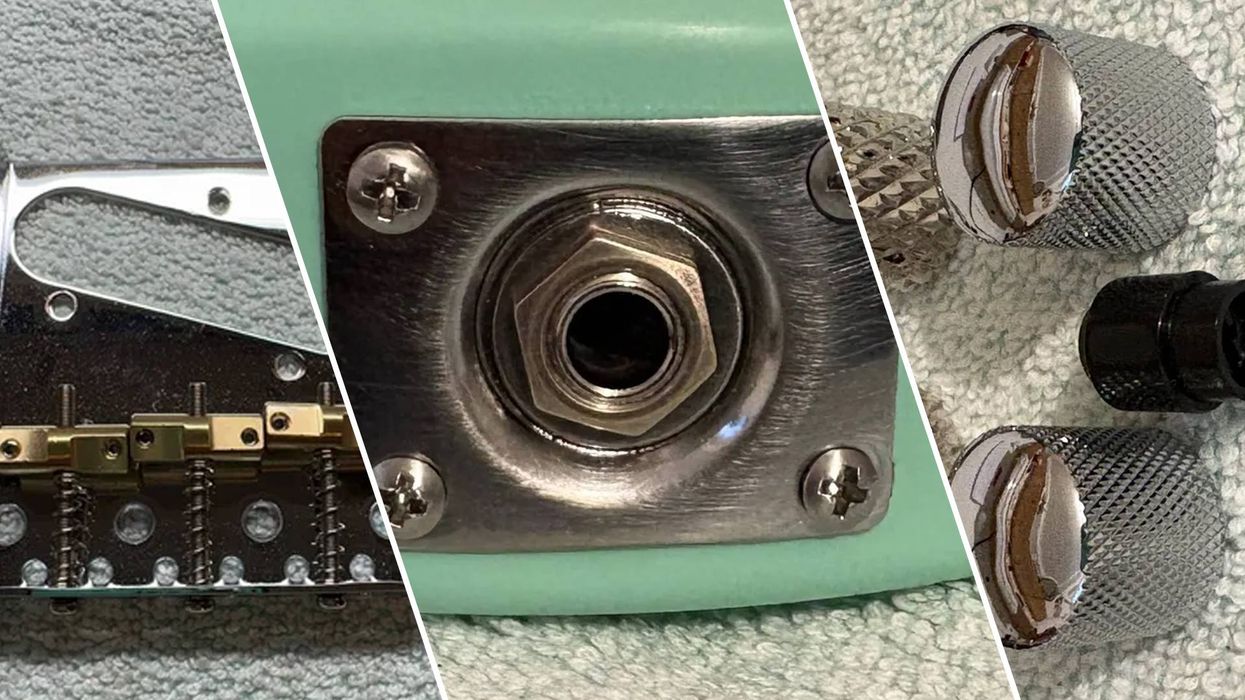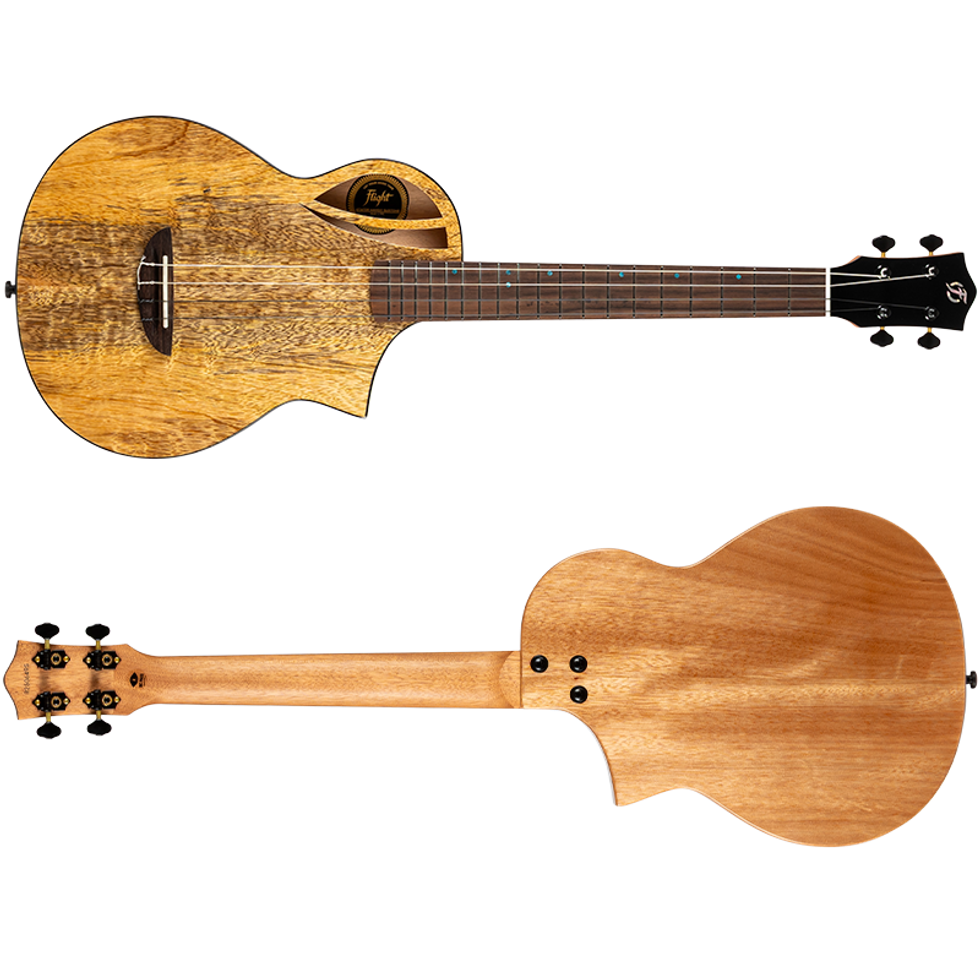
Last month we presented a couple of scenarios where a pickup’s coil wire was broken, and where peeling the coil – removing some of its wraps – could be an easy fix. We covered repairing the first problem, where the coil wire was broken directly where it attaches to the pickup’s white lead. This month we’ll address the second scenario, where the wire is broken somewhere on the coil itself.
Most damage of this type is confined to the coil’s outer wraps. Typically, something has come into contact with the coil, like a screwdriver or a pair of pliers, and one or more of the coil’s outer wraps have been broken. The first step in repairing this problem involves removing the white lead from the pickup, and then removing the coil wire where it wraps through the eyelet several times. Finally, remove any remaining solder from the eyelet so you end up with something like the first illustration above:
Now, grab the loose end of the coil wire, and start peeling. You’ll pull the wire straight off the top of the coil, and as you peel the wire you’ll see it ripping through the wax coating on the coil, which will give you a visual indicator of where the wraps are coming off. If you remove a lot of wraps before you get to the break, you’ll end up with a sizeable handful of wire. Even though it might seem like a lot, it’s really only a very small percentage of the wire that’s on the coil.
You’ll know you’ve reached the break when the wire comes loose in your hand, free from the coil. Find the other end of the wire, and unwrap a couple more turns. This may be a little tricky – finding the end of the wire can sometimes be like looking for the end of a roll of tape. If you find that it’s difficult to find the end of the wire, you can use a soft toothbrush to gently brush the wire in the vicinity of the break. Brush in the direction that the wire was coming off of the coil – this will usually allow you to find the wire’s end without too much trouble.
Don’t assume that there aren’t additional breaks – you’ll need to confirm that this is the case. You should have unwrapped a couple of additional turns of wire in the last paragraph, so now remove the insulation at the end of this section of wire by pulling it between your finger and a piece of fine sandpaper (something like 600 grit). A few pulls should remove the insulation, and you can then use your multimeter to test for continuity between this wire end and the pickup’s black lead.
If you read a DC resistance number other than infinity you should be in good shape. If you read infinity, that means there are more breaks. In that case, start peeling, repeating the steps above until you read a meaningful DC resistance number between the coil wire and the black lead, which will be somewhere between 4.5K and 9K ohms, depending on the pickup.
Now that you’ve removed the “broken” wire and have confirmed that there are no more breaks, continue to peel the coil until the wire wraps are peeling off next to the pickup’s bottom flatwork. You’re going to attach the wire back to the empty eyelet, but you don’t want it coming off of the middle of the coil, as it will surely be snagged when you install the pickup’s cover.
Now discard the peeled wire, with the exception of the last couple of inches, and remove the insulation from this section. If you break the wire in the process, peel off another wrap and try again. Now wrap the end of the wire through the eyelet several times, pulling it taut each time, insert the white pickup lead, and solder it into place. Voilà! Another pickup rescued from the scrap heap. See you next month!
George Ellison
Founder, Acme Guitar Works
acmeguitarworks.com
george@acmeguitarworks.com
302-836-5301












![Rig Rundown: Russian Circles’ Mike Sullivan [2025]](https://www.premierguitar.com/media-library/youtube.jpg?id=62303631&width=1245&height=700&quality=70&coordinates=0%2C0%2C0%2C0)






